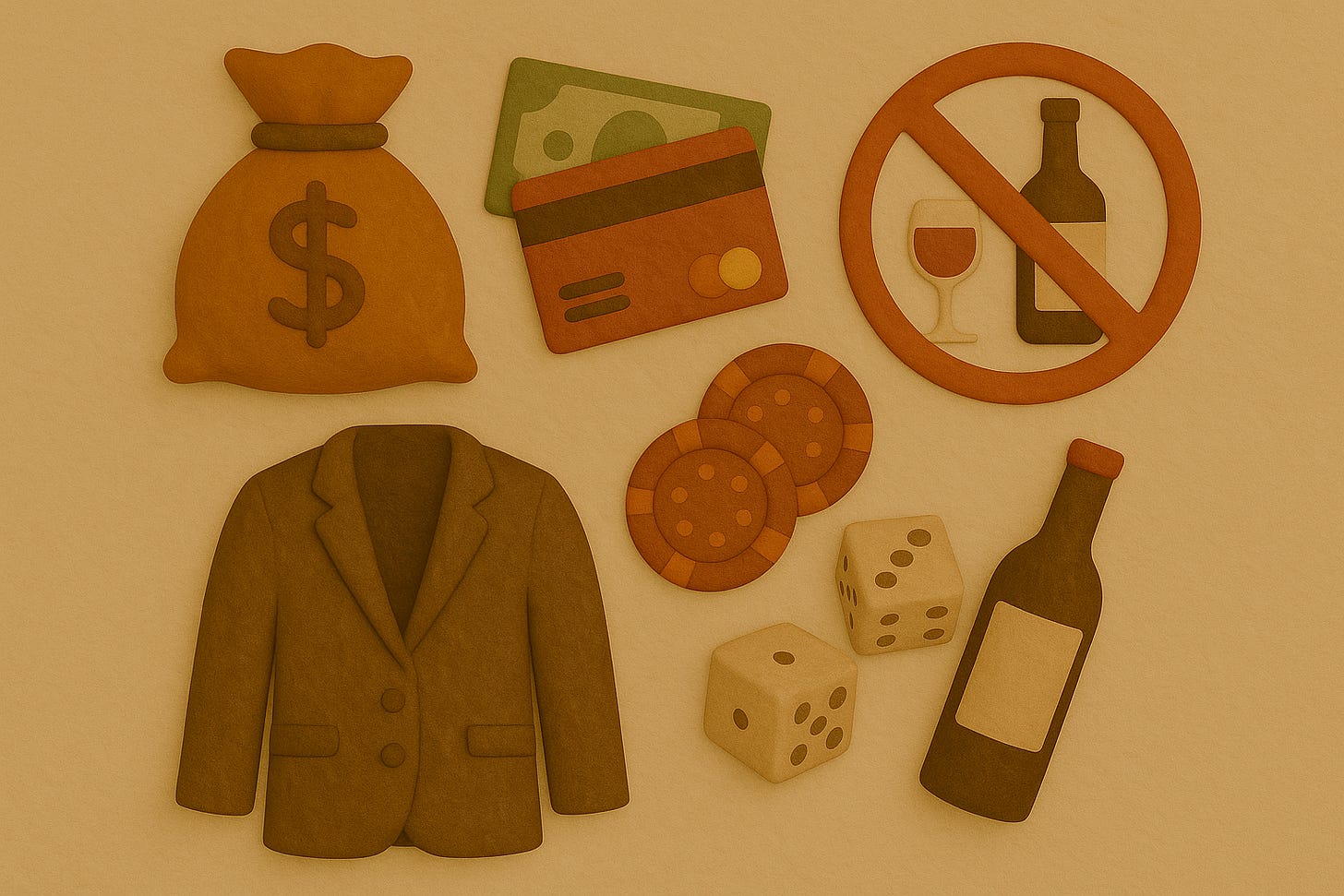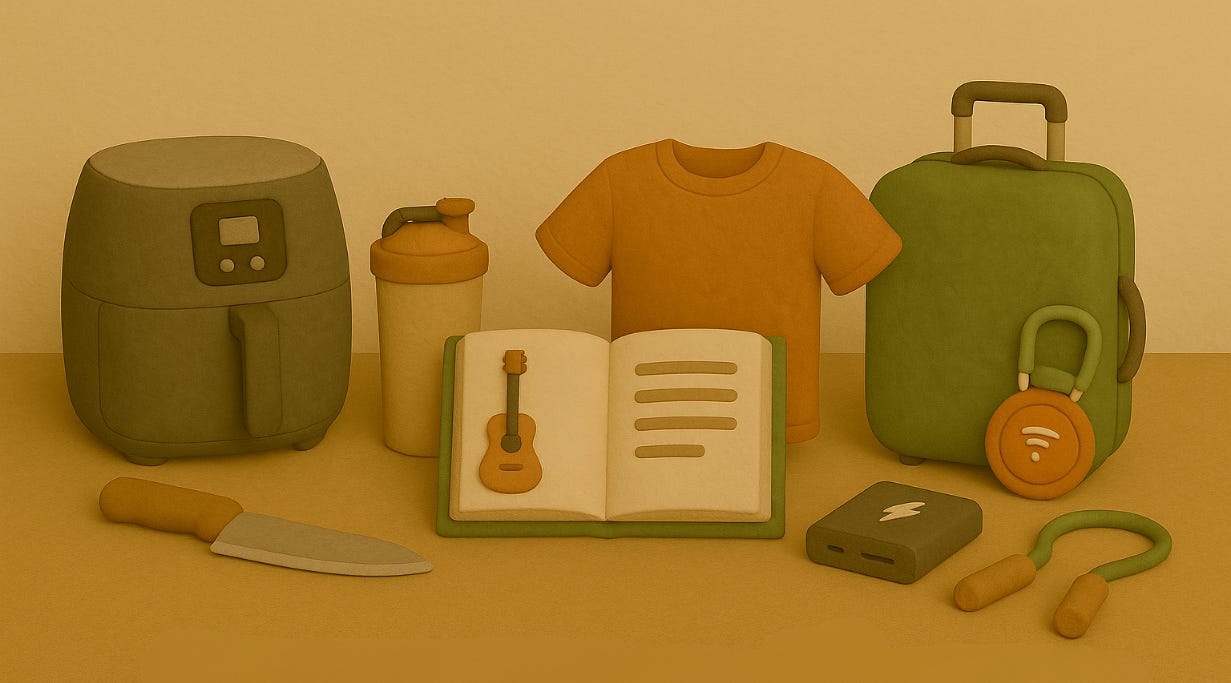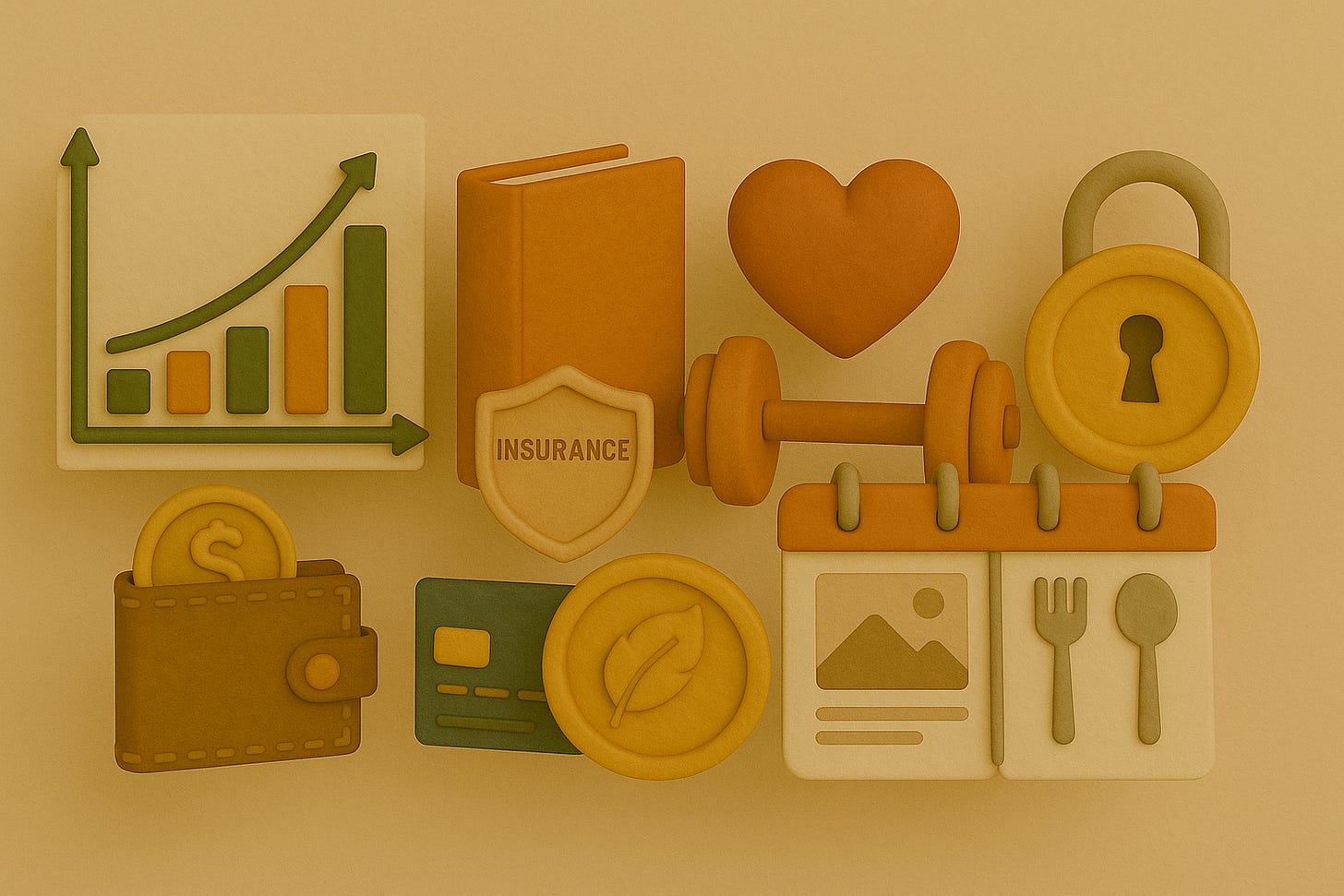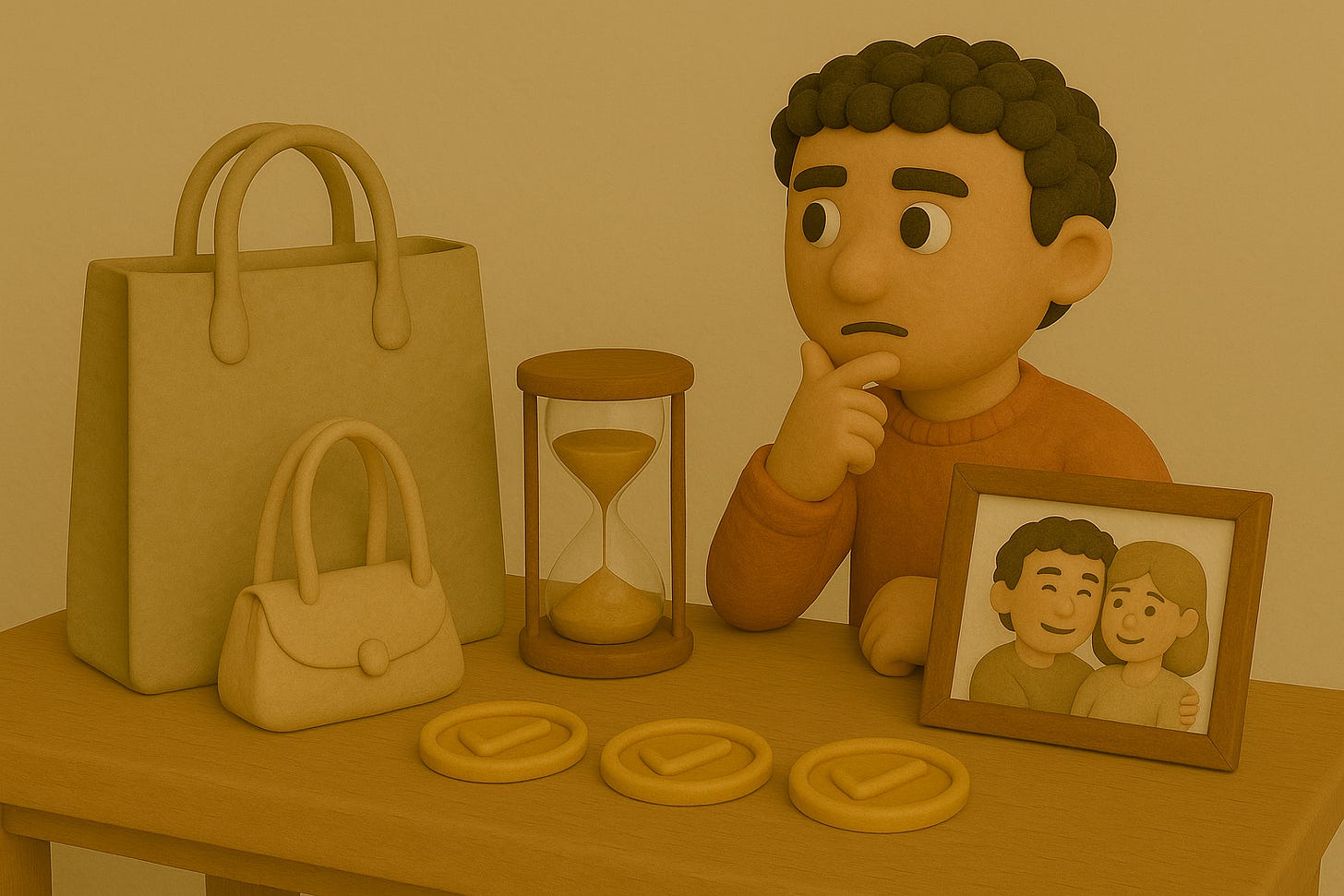The Spending Money Tier List
My Personal Framework for Smarter Spending
Over the past few years, my spending habits have changed drastically.
Initially, I spent without much thought about where my money was going. Now, I’m very selective.
I’ve spent money on things that turned out to be dumb, and I’ve also spent on things that were amazing investments.
In this post, I’ll share my personal money spending tier list, from S Tier to F Tier, and where I think it makes the most sense to spend (or not spend) your money.
This perspective shift has been a game-changer for me, and I hope it helps you too. Let’s dive in!
F Tier: Hard No, Negative ROI
These are expenses that should be avoided at all costs. They offer negative expected value and rarely make sense.
High-fee financial products & high-interest loans
Don’t get ripped off financially. Always do your due diligence before investing or taking out loans. Also avoid loans for consumer products you don’t need. They often come with the highest interest rates.
Pure status purchases
These are items bought solely to impress others, like designer clothing or VIP tables. A good rule of thumb:
Would you still buy it if you couldn’t show or tell anyone about it?
Alcohol past the golden point
Everyone has their limit. I found that often, skipping the last few drinks would’ve led to the exact same good time without the negative health and mental consequences the next day.Gambling & lotteries
These do more harm than good to financial and mental health.Casual gambling with friends is one thing, but mindless gambling or lotteries should be avoided.
F-tier spending steals from your future and gives nothing in return.
D Tier: Low ROI, Usually Avoided
These expenses have minimal returns and are often unnecessary.
Lifestyle inflation
Buying a car you can’t afford, upgrading your phone every year, or splurging on expensive clothes.The excitement fades quickly, and these purchases rarely add value.
Speculative investing
Day trading or chasing the next small-cap crypto moonshot is less about investing and more about gambling with extra steps. Not only do you risk losing money, but you also waste time chasing these opportunities.Junk food
Tastes good, costs little, but compounds into poor health if repeated.
D-tier spending is seductive. But every euro here is one you’ll wish you saved for something better.
C Tier: Fine in Moderation
These expenses are okay but aren’t life-changing. They can be useful if they solve a specific bottleneck.
Subscriptions with marginal utility
That “pro” upgrade you use twice a month. If the free version does the job, the paid version might not be worth it.Niche gadgets & tools
Items used less than once a week often end up collecting dust.Aesthetic decor
While it can make your space look nice, it’s often just a waste of money.Partying & alcohol
Alcohol can have social benefits and might even go to B Tier if the social health gains outweigh the negative health consequences, but it’s important to strike a balance.
C-tier purchases can be okay if they solve a very specific bottleneck. Otherwise, they’re clutter.
B Tier: Convenience & Quality of Life
These purchases reduce friction in daily life and improve overall well-being.
Good kitchen tools
Air fryer, rice cooker, sharp chef’s knife, shaker bottles are tiny upgrades that make healthy eating frictionless.Courses & classes for hobbies
Not everything has to be ROI-driven. Learning new skills or picking up hobbies can be a huge mental health boost and a great way to meet people.Wardrobe basics
I’m talking durable, versatile clothing that look good forever. Personally I’m a fan of the capsule wardrobe approach.Convenience gear
Second chargers, power banks, toiletries, AirTags, travel setups—tools that save time and headaches.Mobility & recovery tools
Things like massage guns, resistance bands, and doorway pull-up bars can make small but impactful improvements to your fitness recovery routine.
B-tier spending won’t transform your life, but it smooths the edges of everyday friction.
A Tier: High ROI & Long-Term Value
These investments bring significant returns or joy over time
Investments for retirement
Tax-advantaged accounts, ETFs, low-fee brokers, stocks, and real estate. These provide long-term financial freedom. Boring wealth builders that equal freedom later.Books
Fiction or nonfiction, both expand your thinking. A $15 book can contain a million-dollar idea.Insurance
You hope you’ll never need them. But if you do, health-, travel-, and other insurances can be lifesavers.Fitness memberships and tools
Consistent physical activity is one of the best investments for your physical and mental health. And you can get valuable insights into your health with trackers like Whoop or Oura.Charity & philanthropy
Giving money to efficient charities can impact many lives and is good for your soul.Healthier food
Spending more on nutritious food is an investment in your long-term health. Skimping here will probably bite you back long-term.Experiences with loved ones
Dinner with friends, a weekend trip, or family traditions are things that are often overlooked when we think too much about productity and efficiency, but these pay off big-time in memory and connection.Digital security
Password managers and two-factor authentication keys drastically reduce the risk of scams and identity theft, which are very likely to occur over the course of a lifetime.
A-tier spending is freedom-oriented. It preserves health, builds wealth, and strengthens relationships.
S Tier: Life-Changing Investments
These are the ultimate expenses that directly improve your health, time, and life experiences.
Health & sleep foundations
High-quality mattress, cooling pad, blackout curtains, regular blood work, dental & physio, under-desk treadmill, quality shoes.Investing in sleep and health always pays off in productivity and well-being. If you don’t have health, nothing else matters.
Skills & knowledge
Courses, coaching, and books for high-value, in-demand skills. Valuable skills and knowledge directly increase your earning power and their ROI will be higher than any other investment.Once-in-a-lifetime experiences
That concert. That trip. That adventure you’ll still talk about in 20 years. You’ll never regret spending money on these.Buying back time
Whether through outsourcing chores, automating finances, or developing skills that increase flexibility.Time is your most valuable asset. Protect it at all costs.
These are the purchases that make life better today and ripple into tomorrow.
My Personal Touch
I still regularly spend money on the items from the S/A tiers.
Here are some examples:
I sleep on an Eight Sleep cooling pad—a €2,000+ investment that paid for itself in energy and focus.
I walk while I work on an under-desk treadmill—10,000+ steps while clearing emails.
I get blood panels a couple of times per year.
I still invest in my education monthly. Whether that’s courses, books or guides, the return I got from these has almost always exceeded the cost to acquire them.
I save & invest automatically every month, ensuring long-term freedom.
If I really want to do a certain trip or experience, I buy it. You never know when you cannot enjoy these things anymore.
For example, I have a 3-week trip to Japan coming up soon that I know will be expensive, but I will gladly spend every cent to have that dream of mine fulfilled.
And yes, I’ve wasted money too: niche gadgets, too many drinks, speculative bets. But the more I practice this tier system, the more aligned my spending becomes with the life I want.
The Takeaway
This tier list has helped me make better spending decisions. I always ask myself:
Would I buy this if I couldn’t tell anyone about it?
Does this purchase give me more time, or take it away?
Will I look back on this in 20 years and smile?
Answer those honestly, and you’ll almost always know the tier where the purchase belongs.
Thanks for reading! :)
See you next Saturday,
Tobi
💡 Question: What is in your personal spending S-tier?







All good tips although I prefer to avoid convenience purchases and use my local library for free books.
Okay I feel like you're attacking me personally here. 😂 I'm just kidding but I could do with some trimming of a few things I spend money on for sure and your way of breaking it down is pretty good. I think I'll try to make a similar list for myself.